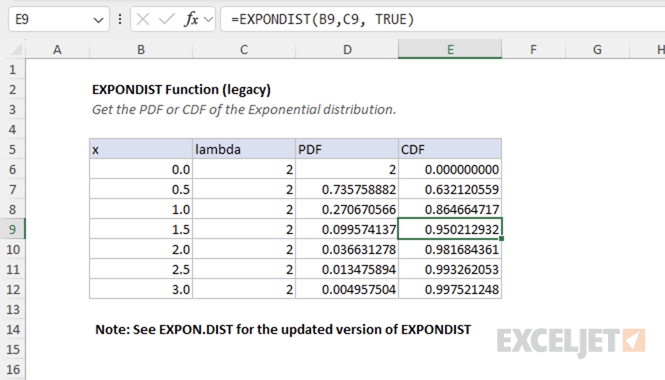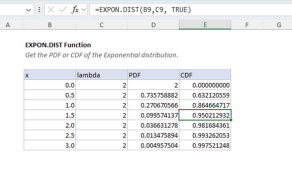Purpose
Return value
Syntax
=EXPONDIST(x,lambda,cumulative)- x - The value at which to evaluate the distribution (must be ≥ 0).
- lambda - The rate parameter of the distribution (must be > 0).
- cumulative - A logical value that determines the form of the function. If TRUE, returns the cumulative distribution function; if FALSE, returns the probability density function.
Using the EXPONDIST function
The EXPONDIST function calculates values for the exponential distribution, which is a continuous probability distribution commonly used to model the time between events in a Poisson process. The exponential distribution is characterized by its "memoryless" property, meaning the probability of an event occurring in the next time interval is independent of how much time has already elapsed. This makes it ideal for modeling systems with constant event rates, such as radioactive decay, customer arrivals, and equipment failures with no aging effects.
For better accuracy and consistency with other modern statistical functions, it is recommended to use the EXPON.DIST function. EXPON.DIST uses the same arguments and provides the same core functionality with improved numerical precision.
Notes
- EXPONDIST is a legacy function. For Excel 2010 and later, use the EXPON.DIST function.
- If any argument is non-numeric, EXPONDIST returns the #VALUE! error.
- If x < 0, EXPONDIST returns the #NUM! error.
- If lambda ≤ 0, EXPONDIST returns the #NUM! error.








